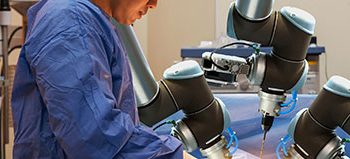Analytical Standards Market categorized into organic and inorganic standards, is experiencing significant growth. In 2020, its estimated size was USD 1.3 billion, and it is projected to reach USD 1.7 billion by 2025, showcasing a Compound Annual Growth Rate (CAGR) of 6.3%. This robust expansion can be attributed to several key factors.
One of the primary drivers of this growth is the increasing public concern regarding food safety and quality. As consumers become more conscious of what they consume, there’s a growing demand for rigorous testing and monitoring of food products. Analytical standards play a pivotal role in ensuring that food products meet strict quality and safety standards, which is essential for maintaining consumer trust and safety.
Download PDF Brochure: https://www.marketsandmarkets.com/pdfdownloadNew.asp?id=8484789
Browse in-depth TOC on “Analytical Standards Market”
225 – Tables
30 – Figures
260 – Pages
Key Market Players
The analytical standards market includes major Tier I and II suppliers like Merck KGaA (Germany), Agilent Technologies (US), Waters Corporation (US), LGC Standards (UK), and PerkinElmer, Inc. (US). Other major market players in the analytical standards market include Restek Corporation (US), SPEX CertiPrep (US), AccuStandard, Inc. (US), Thermo Fisher Scientific, Inc. (US), Mallinckrodt (UK), US Pharmacopeial Convention (US), Cayman Chemical Company (US), RICCA Chemical Company (US), GFS Chemicals, Inc. (US), and Chiron AS (Norway), among others.
Drivers: Rising public concerns related to optimal food safety & quality
Food contamination is a major concern, globally. The consumption of unsafe & adulterated food can cause foodborne infections, mercury poisoning, allergic reactions, and food intoxication. For instance, ~1.7 billion cases of childhood diarrhoea disease occur every year across the globe (Source: World Health Organization 2020). In addition, 600 million people fall sick due to the consumption of contaminated food, of which ~420,000 die of foodborne diseases per year (Source: Centres for Disease Control and Prevention, January 2020).
Techniques such as mass spectrometry, chromatography, and other analytical techniques are extensively used by food testing laboratories to check for adulteration and ensure food safety. Chromatography and spectroscopy are the most commonly applied analytical techniques in quality testing and quality control of food. Liquid chromatography/mass spectrometry/mass spectrometry (LC/MS/MS) and gas chromatography/mass spectrometry (GC/MS) techniques are gaining recognition as highly specific and extremely sensitive techniques testing food products with high accuracy. Moreover, research institutes collaborate with key market players to use their advanced product offerings to ensure food safety. Additionally, the government implements strict regulations to ensure food safety in the respective countries. For instance, in July 2017, Food Standards Australia New Zealand (FSANZ) implemented strict limitations on the amount of arsenic content in rice (one milligram per kilogram). With growing concerns over food contamination and food adulteration, food safety has been prioritized by concerned authorities, thus driving the growth of the analytical testing market.
Restraint: Limited public awareness related to effective pollution monitoring strategies
The increasing pollution levels lead to various respiratory infections, respiratory diseases, allergic reactions, and cancer. Environmental degradation also results in serious environmental changes such as reduced crop yields, changes in weather patterns, and the greenhouse effect. Carbon dioxide is considered a potentially inhaled toxicant that may lead to acidosis, CNS depression, coma, convulsions, or even death. Similarly, high sulfur dioxides levels can affect lung functioning, worsen asthma attacks, and aggravate existing heart disease in sensitive groups.
Governments in various regions are taking initiatives to improve air quality. These initiatives focus on promoting public transport, walking, and cycling; promoting power plants that use clean and renewable fuels; and improving the energy efficiency of homes, commercial buildings, and manufacturing facilities. However, there is limited awareness about governments & initiatives and the impact of air and water pollution on health. This is expected to affect the adoption of pollution monitoring tests, which are performed using analytical techniques such as liquid chromatography, gas chromatography, and IR/UV spectrometry.
Opportunities: Improving healthcare infrastructure across emerging countries
Emerging markets are expected to offer significant growth opportunities to clinical microbiology product manufacturers and distributors during the forecast period. This can be attributed to the growing prevalence of infectious diseases such as HIV, tuberculosis, influenza, and malaria as well as increasing R&D initiatives to develop innovative genomic techniques for efficient disease diagnosis in developing nations.
The growth in these markets is further supported by improvements in healthcare infrastructure, growing healthcare expenditure, and increasing availability and affordability of low-cost clinical microbiology products. In line with the ongoing trend, several government initiatives have been undertaken across emerging markets (particularly in China and India) to strengthen and expand the healthcare infrastructure.
Request Free Sample Report: https://www.marketsandmarkets.com/requestsampleNew.asp?id=8484789
Increasing importance of chromatography tests in drug approvals result in the segment occupying a high share of the analytical standards market
The chromatography technique segment owns a good market share In the analytical standards market. The large share of this segment is attributed to factors such as increasing usage of chromatography in the pharmaceutical analysis (especially HPLC) and the presence of a large number of matured and emerging suppliers that provide a broad range of chromatographic standards across the globe.
Pharmaceutical & life sciences analytical standards estimated to be the growing market
The pharmaceutical & life sciences analytical standards market is expected to witness sustained demand during the forecast period, owing to the increasing drug development in developed countries, increasing use of certified reference materials (CRMs) to ensure the quality of pharmaceuticals, increasing awareness, regulations on cosmetic products, and the rising popularity of traditional medicines. However, the high cost of pharma & life science analytical standards is expected to affect the sales of these analytical standards overall.
Asia Pacific likely to emerge as the fastest-growing analytical standards market, globally.
Geographically, the emerging Asian countries, such as China, India, South Korea, Taiwan, and Singapore, are offering high-growth opportunities for market players. The Asia Pacific analytical standards market is projected to grow at the highest CAGR from 2020 to 2025. strategic expansions of analytical instrument market players in the region, increasing focus on soil testing, food security concerns in India, an increasing number of bioclusters, high use of analytical technologies in Japan, and the growing biotechnology, biomedical, and pharmaceutical industries in China are driving the growth of the APAC analytical standards market.
Request 10% Customization: https://www.marketsandmarkets.com/requestCustomizationNew.asp?id=8484789
Recent Developments:
- In 2020, Waters Corporation (US) established its Innovation and Research Laboratory in Massachusetts (US) for the innovation of analytical instruments and its consumables, which will strengthen the product portfolio of analytical products (including analytical standards)
- In 2020, Restek Corporation (US) launched Ochratoxin A & Aflatoxins Standards.
- In 2020, LGC Group (UK) launched ACCURUN Anti-SARS-CoV-2 Reference Materials and reference materials for allergen quantification.
- In 2018, LGC Group (UK) launched VALIDATE hsTnT kit, VALIDATE Fibrinogen, and VALIDATE Procalcitonin kit
About MarketsandMarkets™
MarketsandMarkets™ has been recognized as one of America’s best management consulting firms by Forbes, as per their recent report.
MarketsandMarkets™ is a blue ocean alternative in growth consulting and program management, leveraging a man-machine offering to drive supernormal growth for progressive organizations in the B2B space. We have the widest lens on emerging technologies, making us proficient in co-creating supernormal growth for clients.
Earlier this year, we made a formal transformation into one of America’s best management consulting firms as per a survey conducted by Forbes.
The B2B economy is witnessing the emergence of $25 trillion of new revenue streams that are substituting existing revenue streams in this decade alone. We work with clients on growth programs, helping them monetize this $25 trillion opportunity through our service lines – TAM Expansion, Go-to-Market (GTM) Strategy to Execution, Market Share Gain, Account Enablement, and Thought Leadership Marketing.
Built on the ‘GIVE Growth’ principle, we work with several Forbes Global 2000 B2B companies – helping them stay relevant in a disruptive ecosystem. Our insights and strategies are molded by our industry experts, cutting-edge AI-powered Market Intelligence Cloud, and years of research. The KnowledgeStore™ (our Market Intelligence Cloud) integrates our research, facilitates an analysis of interconnections through a set of applications, helping clients look at the entire ecosystem and understand the revenue shifts happening in their industry.
To find out more, visit www.MarketsandMarkets™.com or follow us on Twitter, LinkedIn and Facebook.


